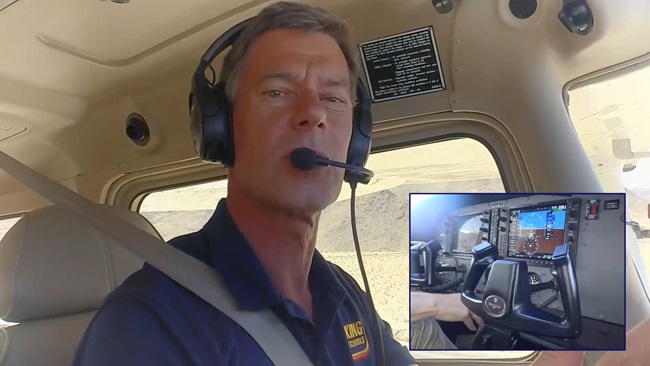 Some of my friends consider me a masochist, a glutton for punishment. They tell me this when, for example, I occasionally write about the myth of the downwind turn. Whenever I write about such a subject, I am deluged with an onslaught of email. Although most pilots agree that there is no aerodynamic difference between a downwind turn made in a homogenous wind and an upwind turn made under the same conditions, there are surprisingly many who do believe that turning downwind constitutes a threat to safety.
Some of my friends consider me a masochist, a glutton for punishment. They tell me this when, for example, I occasionally write about the myth of the downwind turn. Whenever I write about such a subject, I am deluged with an onslaught of email. Although most pilots agree that there is no aerodynamic difference between a downwind turn made in a homogenous wind and an upwind turn made under the same conditions, there are surprisingly many who do believe that turning downwind constitutes a threat to safety.
Another of aviation’s myths—here we go again—is flying on the step.
For those who have not heard of this sacred cow, it is a technique used to establish cruise flight in a way that presumably results in a slightly greater cruise airspeed than when leveling off conventionally. The theory goes like this: During climb, the pilot climbs a few hundred feet above the desired cruise altitude. He then enters a shallow dive to return to cruise altitude. According to proponents, this results in a slightly greater and sustainable cruise airspeed than otherwise would be possible. This is what they call “flying on the step.”
The theory of step flying probably originated with speedboats and seaplanes operating on water. Such vehicles do have step modes during which greater speeds are sustainable at lower power settings than when operating in the plowing mode (nose high in the water). There is no basis, however, for believing that the same principle is applicable in flight. If such a thing were possible, I can assure you that every airline would encourage its pilots to approach cruise altitude from above instead of below (with ATC approval, of course). The fuel saved over a period of years would be astronomical.
It is noteworthy that some aerodynamicists and engineers advocate the theory of step flying. They use all manner of fancy terms (such as drag buckets found in some performance curves) to presumably validate the theory. No matter how convincing their argument might be on paper, however, it cannot be proven in flight.
Some years ago, a pilot friend steadfastly maintained that he could demonstrate the existence of the “step” and volunteered to show me in his Beech Bonanza. Being open-minded, I conceded that perhaps I did not know how to properly place an airplane on the step. It is never too late to learn.
Our target cruise altitude was 6,500 feet in smooth air over Los Angeles. We passed through this altitude during climb, and at 6,900 feet, the pilot slowly pushed the nose down and entered a shallow dive. Moments later, the airplane was stabilized in cruise flight at 159 knots indicated.
After this first test phase was concluded, we descended a few thousand feet and began the second and comparative phase. As we once again approached 6,500 feet during the climb, the pilot leveled off in a conventional manner. When the aircraft had once again stabilized in cruise flight, the indicated airspeed was only 155 knots, 4 knots slower than when “flying on the step.” The pilot folded his arms across his chest and directed a smug expression of victory in my direction.
Had he proven his point? He had not. This is because this pilot, like many others, did not know how to properly transition from climb to cruise (as silly as this might sound).
Many pilots tend to prematurely and impatiently reduce power after leveling off. The throttle (and propeller control, when applicable) often is retarded before the airplane has had a chance to accelerate to normal cruise speed. In a sense, the airplane is established in a subtle form of mushing flight.
Having observed that this pilot had prematurely reduced from climb to cruise power, I asked him if he would allow me to fly his airplane for a few minutes. After descending to 4,500 feet, I resumed a normal climb and soon leveled off at our target altitude. But rather than retard the throttle, I patiently allowed the airplane to accelerate until it would accelerate no more. I then retarded the power controls to the same cruise settings used earlier. The airplane slowed gradually, and when the airspeed had stabilized, guess what? Indicated airspeed was identical to the speed that had been achieved by diving the airplane “onto the step.”
I confess that much of the academic proof of the so-called step is too complex for me to understand. Perhaps such complexity is intended to overwhelm and quiet the opposition. However, if placing an airplane “on the step” does not result in a noticeable and sustainable speed increase, then the theory is invalid. Quod erat demonstrandum.
Web: www.barryschiff.com
Barry Schiff has been writing for AOPA Pilot for 53 years. This month marks the anniversary.
Watch AOPA pilots put “on the step” to the test in identically equipped Cessna 172s .



